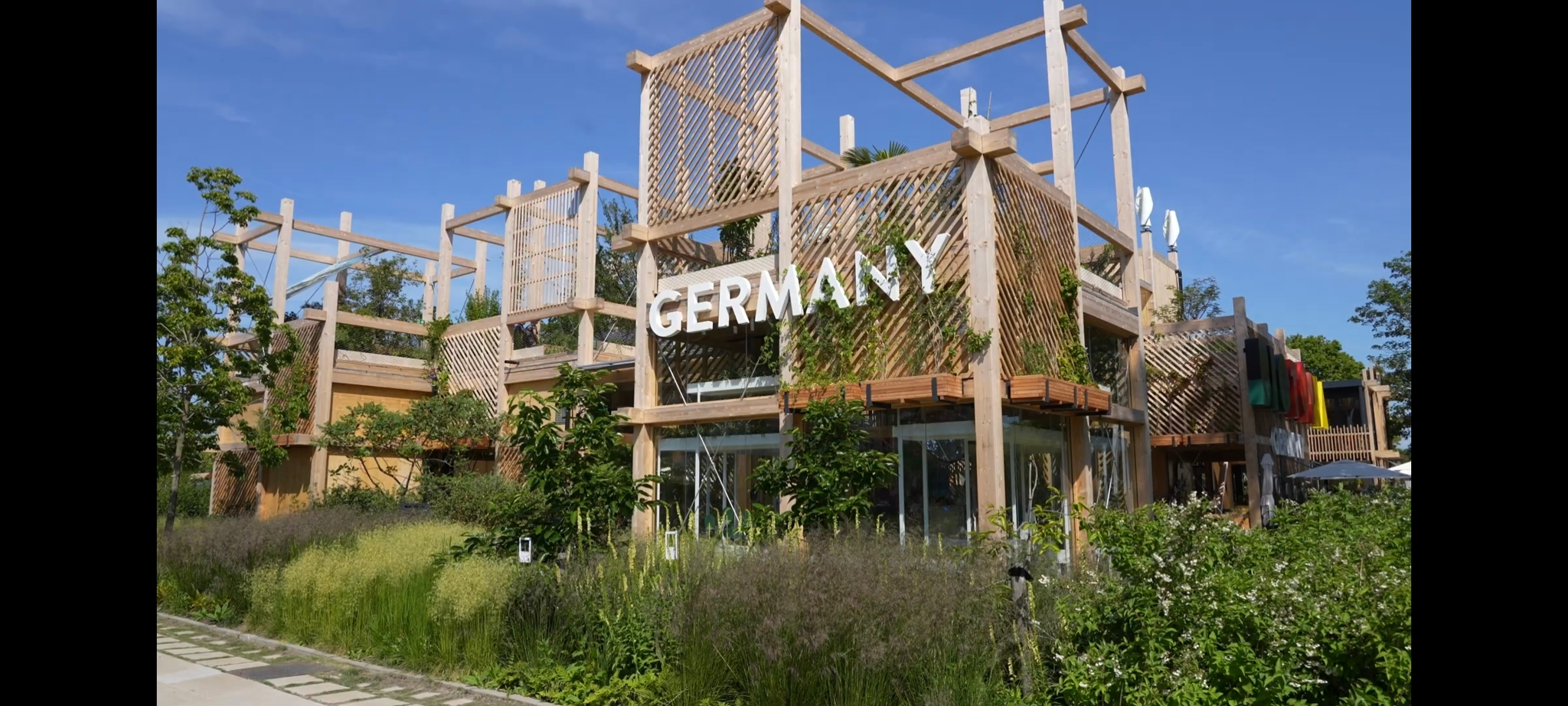
Have you ever heard the saying “it takes a village to raise a child?” Well, where I live, most people do not know the name of their next door neighbor.
This isolation can cause loneliness, but it is more than that. Having a community is helping people do jobs they can’t, it’s lending tools, it’s teaching someone something their parents never taught them, and more.
Luckily, there is a solution that is becoming common in both co-housing and eco-villages around the world. They utilize common areas or community centers, as well as outdoor spaces(such as courtyards or rooftop gardens). While you still have your private home with your own kitchen, you also have these spaces which are open to everyone.
Here are some ideas you might see in these common spaces:
- Indoor play area. In some, the retired senior citizens who like to keep busy volunteer to watch children in these areas while parents are at work.
- Dining room big enough to fit every person who lives there and guests.
- Community Kitchen. People take turns cooking, or they have occasional dinners together.
- Private office spaces (for work-from-home workers who still want to be around people).
- Tiny libraries.
- Outdoor play area.
- Outdoor sitting spaces.
- Community gardens and/or a greenhouse.
More Ideas:
- Window awnings which utilize passive solar, so the sun is blocked in the summer but not the winter
- A central courtyard for passive cooling. Examples: Skywells (China), Tsubo-niwa (Japan). Thevenin @beehaw.org adds that a retractable cover of some kind might be important to protect from wind pressure.
- Better insulation for better temperature control, and sound proofing.
- Bird-safe windows
- Rainwater collection for watering plants (or, the more expensive option: for piping into toilets)
- White roofs for cooling in hot climates, dark roofs for warming in cold climates
Recommended Video:
What else would improve apartment buildings?

Iirc Moroccan houses would be a good blueprint because they use passive cooling. Inside it’s like 20 degrees. I might be remembering wrong, but they have this central space that opens at the top and this allows the wind to blow through somehow. This picture reminded me of that.
Another thing would be proper sound isolation, that really helps people get along better in the city. It always baffles me how big the differences are between buildings.

They are a good choice for places with climates like Morocco. Passive cooling is the last thing you want in say Norway for most of the year.

That’s why you make it so that you can do passive cooling in summer but don’t do that in winter. There are quite a few solutions that essentially boil down to opening windows during the night while keeping people, water and insects out.
It’s often called night cooling or night flushing. See for example this company explaining it.

The problem with Moroccan houses in cooler climates, is that they are designed so all windows are shaded as much as possible. This is done by having small windows on the outside with permanent shading structures, while there are large windows and doors facing a courtyard. That courtyard is designed to be small, as to make sure that as little direct sunlight hits the windows as possible. At the same time the airflow is disgned to be relativly costant. by using the relativly cool massive walls as a heat sink.
For a place like Norway, you want pretty much the opposite. Massive windows on the outside facing the sun, as to provide more heat in winter. Places on the building with no direct sunlight, should not have windows, as to loose less heat.
You then use moveable structures, like opening windows, moveable shading and the likt to adapt to the less common weather like cold days in Morocco and hot days in Norway. But designing a building for the desert, does not make it a good choice on the artic circle.

That I agree with. The specifics of how they build are not suitable to places like Norway (or most of Europe for that matter). That does not mean one cannot look at the concepts and apply them such that it makes sense in the context though. Many buildings in for example the Netherlands (where I live) are mainly built for keeping the heat in nowadays and overheat in the summer. Especially housing stock built from the 80s through the 2000s have overheating problems with the changing climate. This is mainly due to lack of window shading and night ventilation options. And instead of seeing a move towards shading, you see a move towards airconditioning instead, which is generally not needed if you design a building properly.
I thought you were against implementing the concepts and did not expect you to interpret the suggestion literally (aka, to build Moroccan style homes in Norway).

How hot are the summers there? Down in Germany they can be unbearable, as airco simply wasn’t a thing here.

Even in the south in Oslo temperatures above 30C can happen, but are hardly common. So even with climate change, the climate would be about what Germany used to have.

Ya, Germany will be more like France, France like Spain, and I suppose Spain like Morocco?
I met a seasoned expert once at an expo l; he said it’ll all move up north and we cannot stop that. The real question for us is how can we slow it down to ensure its capacity to adapt isn’t overwhelmed, which would invariably increase the risk of an ecological collapse.
Good points!
You’re absolutely right about courtyards! I’ve read about them being used all over the world! For example, in China, they are called(in English) “Skywells”. The other thing I like about courtyards is that they can give kids a safer space to play, or even just a little greenery.
Would you mind if I edit my post to add your ideas to the list with credit to you?

Go ahead but no need go credit me per se. There was a German docu about it if you want me to find it. Might have an English version.
If you can find it I will absolutely link it! No need to stress if you can’t, though

Well, I couldn’t find the docu. But here’s still a video you can skip through that has some interesting eco architecture:
https://www.youtube.com/watch?v=-p0NoN1BgXg

Very interesting! Thanks for sharing!

Here’s something you could pull through the translator:
I’ll see if I can still find the docu too.

- Washing area for clothes, with washing machines and clothes lines.
- Tool liberary for common tools like hammers, drills and so forth
- shared transport like car and a large cargo bike
Another big one, which is often forgotten is to add space for shops or similar commercial use cases on the ground floor. Mixed use minimizes the length people have to travel. Also some of them can be in the back area. There are quite a few commercial spaces, which do not really need street access. Things like doctors offices, lawyers, but also many craftspeople come to mine(as long as it does not smell, is toxic or loud).
Those are all absolutely wonderful ideas!! Would you mind if I edited my post and added them to the list with credit to you?

I cannot find the reference now, but I remember reading about favelas and how they are designed with courtyards so that there can be a shared responsibility of childcare.
The other thing that jumps to mind is dorms for students in the US which have a very similar coliving feel. I believe the Dutch and some Nordic countries were also collocating the elderly into similar areas to create a mixed generation encampment.
Thanks for the info! I will try to research those

@Blair the absolute dream

All great ideas, very resonant with Soft City, by David Sim, and not only the visual style which I could stare at for hours!
Overall more functional variety, more different people and purposes and activities in close proximity and at human-scale, and better integration of buildings and lives into whole tapestry rather than bits and tatters separated by seas of cars and car infrastructure…
Thanks for sharing! I will check if my library has it!

@Blair We’ve looked into co-housing but there are few places in our area, and most are too pricey for us. I would love to see this become more common, because it increases community and allows for some independence as well.
That’s good they are becoming more common! One opened in the city near here (also too expensive for me) and it sold out in hours, so people absolutely seem interested.
Hopefully as they become more common, they will get more affordable too.

The graphic there looks like an Embassy Suites hotel without the roof.
I’d strongly suggest a retractable canopy for the peristyle (Atrium? Courtyard?), because you basically have an enormous chimney – on windy days, the draft pressure caused by a flue that size would threaten to break peoples’ windows or suction their doors shut.
Interesting! I had not thought about that being a possibility. If it wasn’t so expensive, it would be so nice to have glass that could slide open in the summer, but close for the winter and bad weather.
(I don’t know if it helps, but even though Atrium was another word for courtyard, people here typically use it to mean a courtyard covered in glass)

